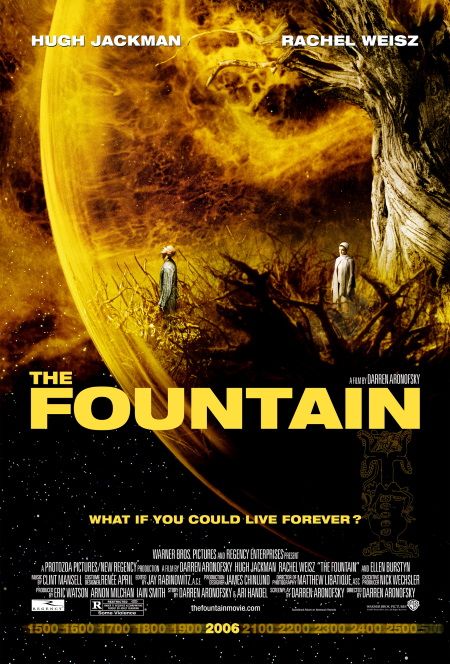Azog Con III was held this past weekend which means that I was down in Lombard, IL enjoying the company of friends, enjoying the company of beer, and gaming until the antelucan hours. Madtown was represented by James, Charles, and myself and our journey began Friday when we hopped into a nice rental car and hit the road. The plan was to head into Chicago and grab lunch before going to Ted's house for the Con.
The trip down was fun. After spending some time BSing, we took advantage of the CD player and listened to some Doctor Who -
Year of the Pig. It made for a fun traveling distraction with all of the Edwardian English, Nurse Bultitude making fun of the Doctor's clothing as she spies on him from afar, and the realization about 30 minutes in that one of the characters we'd been listening to is of a porcine nature. And when all of the cows suddenly appear on the beach, well, we were flummoxed.
Arriving in Chicago, we headed immediately towards Little India for lunch. We stopped first at a place that I'd noticed the last time I was down there which served Madras cuisine -
Udupi Palace. Sitting down and looking at the menus, it dawned on us that it was a vegetarian joint. I didn't care because there were oodles and oodles of dishes that I'd never seen on a menu here in Madison. And so I convinced my companions to give it a go and that we'd hit a place oriented towards carnivores afterwards. I ordered the onion & chili
uthappam; Charles got an appetizer assortment plate; and James got something I cannot recall the name of but was probably Masala Dasai. James' dish consisted of this huge crepe-like thing folded around a core of a spicy vegetable mix. The appetizers included samosas, pakora, and these flat slices of potato that were dipped in batter and fried. Charles reported that the samosa was very tasty with the vegetable mixtures being less "pureed" together than the ones here in town. For my part, I loved the uthappam. It was a large, thick pancake make of rice & lentils. There were chili slices dotting one side of it and it was served with coconut chutney and sambar, a lentil soup that was great. I really loved the tamarind. Digging into the uthappam, I found that there was plenty of sweet, tender onion to be had as well as the chilis. Surprisingly, it wasn't very spicy but was tasty nonetheless.
Then it was time for some meat. Much to our dismay, the Viceroy of India was buffet only so we ended up heading to a kabob joint, the name of which I cannot recall. We all had beef kabob on naan. They were really fucking good and Charles and I decided then and there that Madison needs a kabob joint ASAP. The tender beef was nestled in a pouch of soft, warm naan and it was just so good. Charles was reminded of the kabob stands he encountered in England and the pleasant memories put him in a much better mood.
Our last stop on Devon was the Argo Georgian Bakery where Charles stocked up on their pelmeni which he rates quite highly. From there it was back to the Kennedy and rush hour hell.
It took us a while but the weather was fine and we had my IPass so traffic wasn't a big deal. Arriving at Ted's, we found that only Don had beaten us there. We dropped the cooler off in the garage and brought the rest of our gear inside. As we waited for others to arrive, we played some
Settlers of Catan. My brother, Carl, and Glen eventually showed up as did Pete and John. Carl mentioned that the Chicago Tribune did an article on the game a couple months ago and expressed his dismay that no one interviewed said "wood for sheep" or, if they did, that it was not quoted in the article. (You can read it
here.) "Wood for sheep" is a very innocent phrase in the context of the game where players trade resources with one another. But it does tend to conjure up images of lonely Scotsmen.
With something more akin to a con quorum, we busted out
Cirvus Maximvs, a chariot racing game. Carl had brought a bottle of Blanton's, which is a very tasty and very expensive bourbon. To start the race, we made a toast and had Letha, Ted's better ¾, drop the scarf. My chariot took some damage and I think I managed to cross the finish line with about half a wheel left, but cross it I did. Still, I've got a grudge against James because, when I tried to whip his driver in the face, he stole my whip. The bastard! I can't remember what else we did that night. Drank beer, obviously. Maybe a game of
Thurn and Taxis? All I can remember is going to bed around 4.
Waking up around 8, I found that everyone else was awake too. We drank some coffee and I had me some lefse with butter and cinnamon sugar. Don wanted to really break his fast so he, James, Charles, and I went to a local restaurant for some grease. From there it was off to
Sam's Wines and Spirits. It was one huge booze emporium. The beer in single bottles was to be found on shelves 30' and about 12' high. They were these walls of bottles. Ales dominated the imports with sections devoted to England and Belgium being the most prominent. The domestic wall had plenty of tasty choices including, oddly enough, Capital. Capital is not distributed in Illinois so obviously some wheeling and dealing was going on. It was good to see that the demand for it was so high that the store used some back channels in order to stock the product. I ended up getting a Finnish beer and a Belgian. Don bought nearly a case while James got some very fancy and highly expensive Italian brandy.
When we got back, I bowed out of a game of
Puerto Rico in favor of a shower. But, when Greg, Greg, Scott, and Pete arrived, I eagerly jumped in for
Formula De, a Formula One racing game. I think 8 of us raced. As we were playing, Pete pulled out a DVD which featured highlights of the 2005 Formula One season and Ted put it on his huge flatscreen TV. So we had the real deal playing in the background as the game wore on. I tried and tried to crash and take someone out with me but could not manage to do it. Never having played the game before, I have to say that it was quite a bit of fun, especially with so many people.
That evening, 6 of us gathered to play a Call of Cthulhu adventure GMd by Don. He began by taping Soviet posters and pictures of Lenin on the walls. He then placed some red lights around the room and finished by placing a bottle of vodka on the table. It would prove to be
Machine Tractor Station Kharkov-37. It takes place in the Soviet Union in March 1933. Machine Tractor Stations were depots for Soviet kolkhozes or collective farms and we find that telegraph contact with Karkov-37 ceased in late December '32. And so a team from TASS, the Soviet telegraph agency, is being escorted by the Red Army to the station to reestablish communication lines. I played Lt. Electrician Nicholai Dugov; James was Captain-Technician Alexsandr Triepinov; and Charles assumed the role of Administrator-Major Yuri Kopolev. Escorting us were Scott as Snr Lt. Grigor Fyodorov, Greg as Snr Sgt. Dr Vissarion Ivanovich Liubimova, and a Commissar. When Don read out the parts to play and said "Commissar", my brother raised his hand immediately and it was a good choice. My brother is a big fella and he barked out orders all in the name of the Party. In fact, when he wanted me to pass him a sack of cookies that was next to me, he'd ask me to do so for the Party and/or the Motherland.
I can't recall where we started out from but it was a 10-hour drive to the station in the freezing cold with a bunch of young Red Army boys who tried to smuggle a 20 gallon barrel of kvas onboard. While it was left behind, the vodka wasn't. We stopped for the night out in the middle of nowhere and made camp. One of the soldiers went out hunting. We hear a shot followed shortly thereafter by a scream. Running to see what happened, we found the soldiers cowering by the animal's corpse. Only this was no rabbit that any of us had ever seen. It was completely malformed with one of its eyeballs being the size of a grapefruit and hanging out of its socket. And where it should have had teeth, there were tentacles. This didn't bode well.
We eventually made it to Machine Tractor Station Kharkov-37 only to find it deserted with some of the buildings burnt to the ground. Plus there were some funeral pyres out behind the barn. The curious part, though, was why one of the grain silos should be surrounded by makeshift posts with every light they could muster atop them. Opening the silo, hundreds and hundreds of gallons of the most foul-smelling water poured out. There were dead bodies on the floor. Plus there was a mummified corpse in the generator truck. Did I mention that we TASS folks weren't really TASS folks? No, we were really agents of a super-secret organization and were sent to find out what happened there, specifically, what happened to the agents from a not-so-secret organization who had been sent a few months ago to investigate the strange goings on there.
Curiously enough, I survived. But I did go quite insane. There was a garbage can just behind my chair and I got scared shitless when John came up and threw something into it. I just saw this shadow out of the corner of my eye and it made my heart skip a beat. Such are the perils of a good Cthulhu adventure, I guess.
It was another late night. Ted, John, and Mike blathered on about their high school days. This included a humorous story that happened after they graduated involving Ted and his former large-breasted French teacher. It was quite humorous. The next morning found folks either readying to head home or to Da Bears game. Snow can even make a suburb look nice and the couple inches that fell earlier in the morning made one forget that you were in Lombard. Since those folks who were going to the game had to catch a shuttle, James, Charles, and I headed out for Madison. After a stop at the pancake joint again. We even got the same waitress who remembered us. Back on the road it was more Doctor Who.




